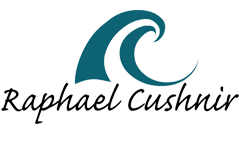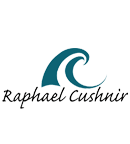Are you suffering from Anxiety or Depression?
If so, please read on to learn how Emotional Connection can heal you once and for all, putting the power in your own hands and employing a simple method missing entirely from the most common current approaches.
Much of the material on this page is drawn from The One Thing Holding You Back.
If you have any questions at all about this approach, please contact me by email.
*****
Each year in this country, millions upon millions of prescriptions are dispensed for anti-depressant and anti-anxiety medication. For some, these medications are a true lifesaver. For others, they provide a temporary buffer in times of great pain. But for many they’re misapplied and ineffective, leaving people with serious side effects and the unfortunate impression that they’re beyond help.
For me, depression and anxiety aren’t emotional conditions, but rather responses to emotional upset. Depression is usually just what it sounds like—a pushing down of feeling. The resulting listlessness comes from having to expend so much energy in an effort to keep difficult emotions from surfacing. The best description I know of for anxiety, in a similar vein, is the fear of feeling. Creating a pervasive state of agitation is often a way, conscious or not, to avoid the uncomfortable emotion that underlies it.
Depression and anxiety aren’t emotional conditions, but rather responses to emotional upset.
Obviously, I’m not a physician. I don’t dispense medical advice or seek to influence my clients’ decisions regarding medication. But I do have one suggestion that often helps people make those decisions with greater clarity and confidence: When facing significant depression or anxiety, learn the practice of emotional connection and apply it consistently for at least a couple weeks. If your distress continues regardless, then it’s definitely time to see the doctor.
But often that’s not what happens. Instead, emotional connection liberates all the energy and well being previously sapped by depression or anxiety. People feel revitalized, peaceful, and well equipped to handle difficult emotions the next time they arise. Plus, they’re relieved not to have been clinically ill after all. And for those who eventually do receive a diagnosis, the ability to connect emotionally still improves their handling of life’s inevitable stressful passages. It also helps wean them off medication, when appropriate, with greater ease and speed.
Depression: A Closer Look
When Connie came to see me, she was already on an anti-depressant. “All the energy had just drained out of my life,” she told me. “I used to be a happy, productive person, but now there’s just no spark” During the appointment, our conversation kept coming back to Josh, her disabled fourteen year old son. Josh was adorable but also out of control and infuriating. For years, Connie resisted huge amounts of anger toward him because it “wasn’t right” to be angry at someone who “couldn’t help it.” I guided Connie to separate her judgment about this anger from the raw fact of its existence. I suggested that her depression was a natural result of keeping the lid on so much rage.
Her depression was a natural result of keeping the lid on so much rage.
To remedy the situation, I suggested that Connie carry around a note pad, and make a tally mark every time Josh’s behavior elicited a new surge of anger. Each tally mark represented five minutes of any anger-expression technique—her choice—to be performed as soon as Connie could arrange for alone time. She usually opted for dancing and hollering to aggressive music. Some days required only ten minutes of such discharge, but others up to an hour. Soon, Connie had learned to release her anger quickly, close to its arising, and had also emptied herself of a decade-long backlog. As a result, her verve returned. She and her doctor decided to discontinue medication. The following autumn, Connie went back to school to complete a long-delayed degree in special education.
Anxiety: A Closer Look
My client—we’ll call him Gary—suffered debilitating panic attacks. Panic attacks are anxiety to the nth degree. Nothing, not even medication, was keeping Gary’s panic at bay, as several emergency room visits and repeated in-patient psychiatric stays attested.
I had the good fortune to be with Gary as a panic attack came on. I guided him to experience it directly, in his body, one moment at a time. My counter-intuitive instruction was to turn into the anxiety, rather than away from it. To “surf it,” no matter how terrifying the waves. This was inner exposure therapy, round one.
After about two minutes, the anxiety cleared, leaving Gary face to face with even greater waves of anger, grief and shame. Here, too, I supported Gary in more surfing. Inner exposure therapy, round two.
There was lots of shaking, and tears, and diversions into thought. But after about five minutes, Gary experienced a relative calm. And a sense that his world was now different.
Why? Because he knew, from his own direct experience, that there was something he himself could do when gripped by anxiety. Something that worked. With no side effects.
He knew, from his own direct experience, that there was something he himself could do when gripped by anxiety. Something that worked. With no side effects.
Plus, he saw with convincing clarity that the anxiety had been blocking his core emotions. He saw that once he was able to experience those emotions directly, the anxiety was no longer present or necessary.
In working with hundreds of clients with similar challenges, I feel confident most people can clear their own anxiety the same way Gary did. In doing so, their brains get rewired so that future bouts of anxiety are less intense and more easily surfed.
It’s not easy, of course, but it is simple. If you suffer from anxiety, and are willing to embark upon “the wave less traveled,” a renewed life awaits you on shore.


